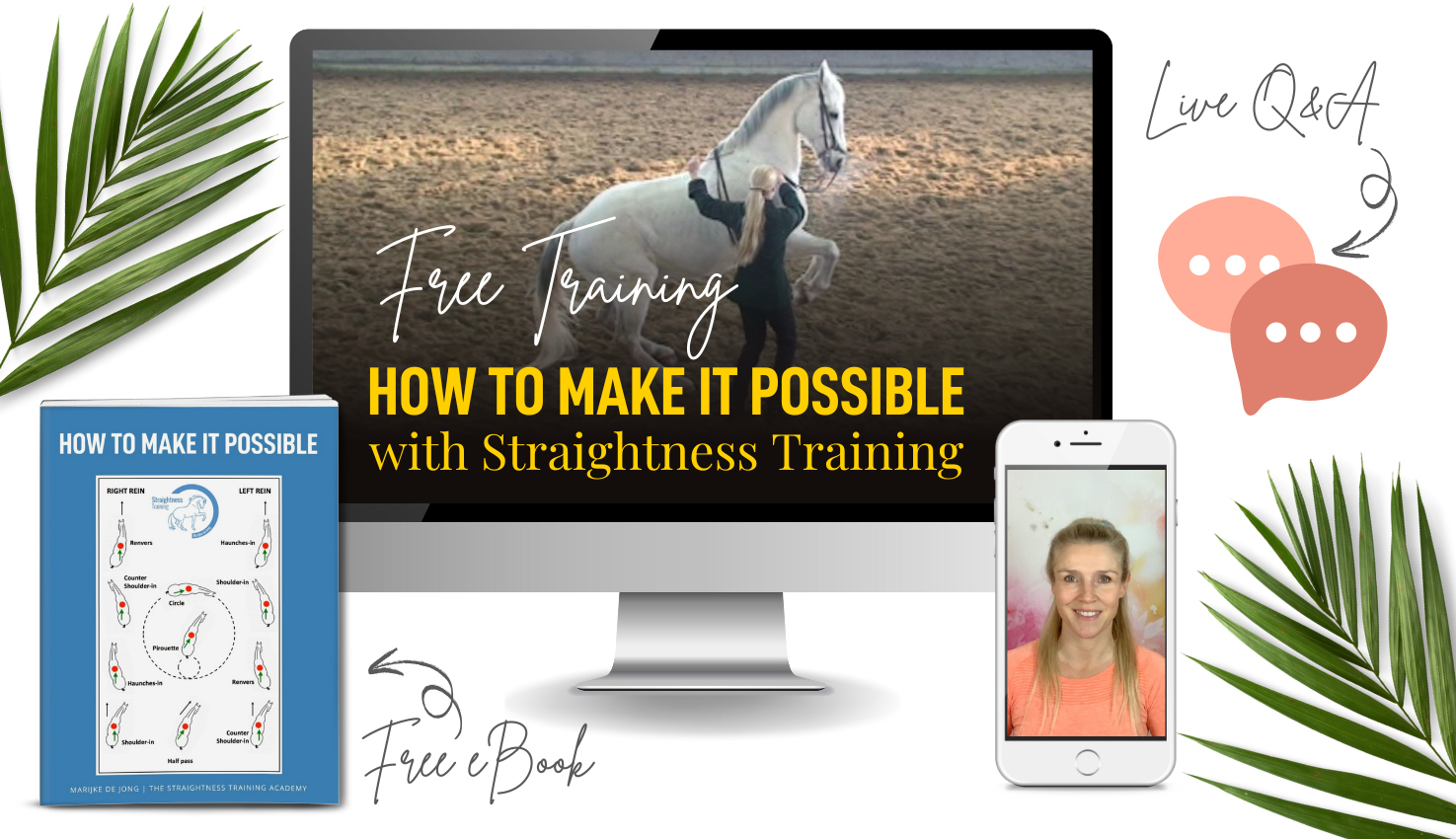
Senses
To be successful with Straightness Training it is important to have insight in the senses of the horse. The horse identifies his environment with his senses. Like humans, we can divide horse senses into:
Sense of Hearing
An important sense of the horse is hearing. The horse has better hearing than humans.
With its mobile ears the horse can continuously capture all kinds of sounds from all directions within his environment. If a horse is on alert, the horse will have both ears tightly targeted on to the corresponding object. If the horse is concentrating on the riders, the horse will be more backwards.
Hearing also plays an important role in the orientation of the horse in the dark.
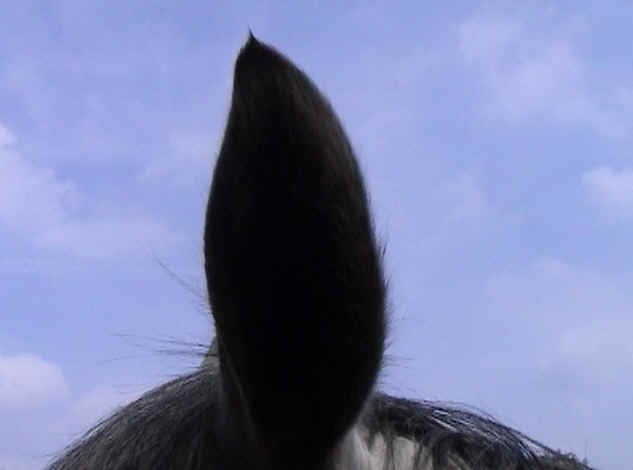
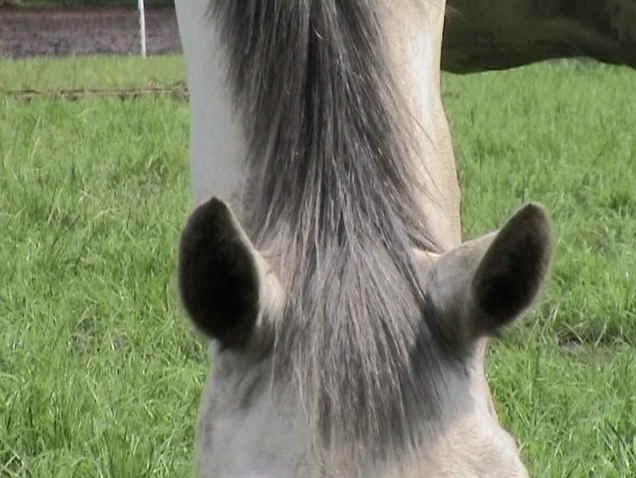
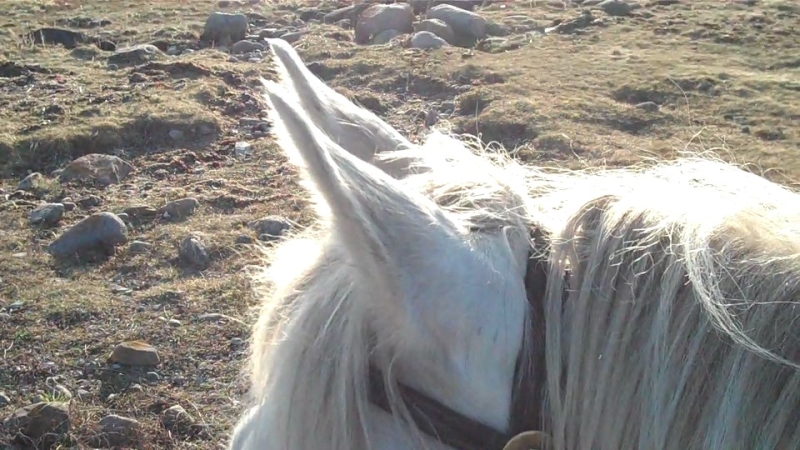
Sense of Smell
The sense of smell of the horse is very well developed. For example, a horse can smell if there are other horses in the area.
From a social point of view smell is very important. A newcomer will first be extensively sniffed by the others and vice versa. Once a horse has noted the scent of another horse, he will never forget that particular horse.
Stallions and geldings also smell each other’s dung and poop over it.
Horses can have very different odors.
If they smell something special, horses will often put their noses in the air and pull their upper lip up.
Horses can smell if their drinking water and food is good. If a horse accidentally poops in his water bucket, it will not drink from it.
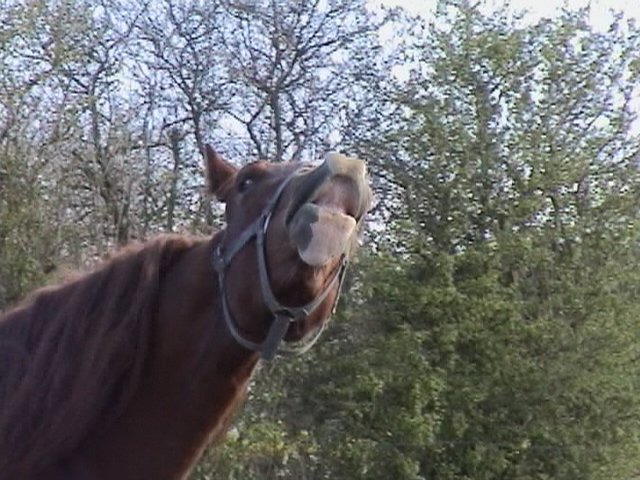

Sense of Taste
The sense of taste of the wild horse helps it to distinguish poisonous plants from non-poisonous plants.
Many horses have preferences for or against certain flavors like sour, bitter, salty, sweet. Therefore one horse likes a banana and the other does not. In general, most horses prefer sweet, but they will not reject a sour apple. Also, horses like to lick a salt block.
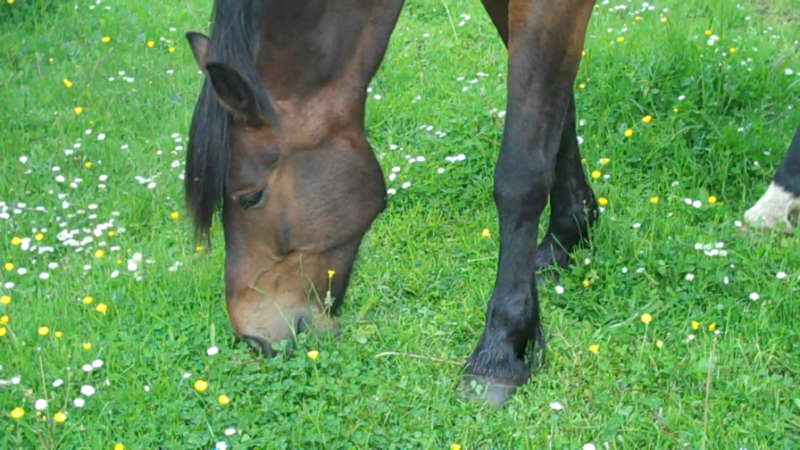
Sense of Touch
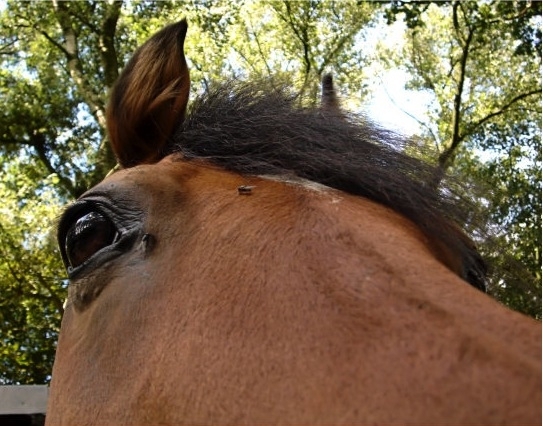 A horse is naturally very sensitive and can even feel a fly landing on his skin. If there is a fly on the horse’s skin, he will chase it away by swishing his tail, shaking his head or twitching with a subcutaneous muscle.
A horse is naturally very sensitive and can even feel a fly landing on his skin. If there is a fly on the horse’s skin, he will chase it away by swishing his tail, shaking his head or twitching with a subcutaneous muscle.
A horse responds to the slightest touch and therefore we can say that his feeling sense is highly developed.
Whiskers
Horses explore their direct environment with the long hairs on their lower and upper lip.
 For wild horses the whiskers around their eyes, nose and mouth were needed in order to scan the ground in search of edible plants. The nerve endings and pressure sensors that sense when the hairs are touched are also still functionally present in our domesticated horse.
For wild horses the whiskers around their eyes, nose and mouth were needed in order to scan the ground in search of edible plants. The nerve endings and pressure sensors that sense when the hairs are touched are also still functionally present in our domesticated horse.
Protection is the main function of these hairs. Sensitive areas such as the eyes, nose and mouth are protected from injury by these hairs.Because of the long hairs, horses can ‘feel’ as follows: ’I need to be aware now, within a few centimeters I will hit my nose’ or ‘something will get into my eye’.
Horses without these hairs clearly have a bigger chance of hurting themselves! By shaving these hairs off, you take away part of the protection mechanism of a very important, sensitive part of their heads. It is unpleasant for the horse to have these important whiskers shaved off.
Sense of Sight
The sight of a horse is totally different from a human. The differences concern:
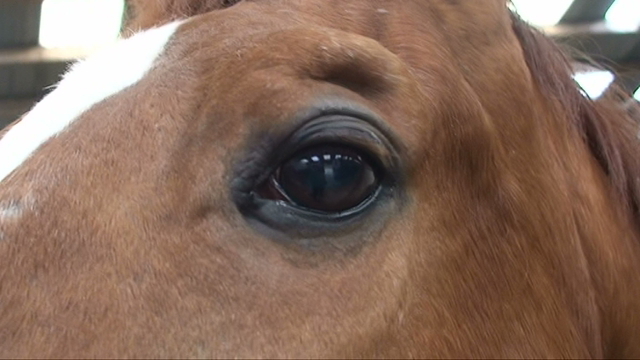
- Positioning of eyes
- Perceiving details and movement
- Total view
- Three-dimensional and monoculair view
- Blind spot
- Focus
- Night view
- Adapting to light
- Colors
Positioning of eyes
All predators have their eyes on the front of their heads, just look at owls, cats, dogs, lions. This way they can focus on their prey.
The horse has his eyes on the side of his head, because he is a prey animal and he needs to be able to see the danger coming from all around him.
The eyes of a human are placed in the head almost next to each other.
Focus
 A horse can see both close up and long distance because of the way his eye focuses. Basically a horse can simultaneously see both close up and far away. If he is grazing, he is able to look at the ground and at the same time he can clearly see far away into the distance.
A horse can see both close up and long distance because of the way his eye focuses. Basically a horse can simultaneously see both close up and far away. If he is grazing, he is able to look at the ground and at the same time he can clearly see far away into the distance.
- As a prey animal it is vitally important to be able to see any sudden movement. Noticing the predator in time is crucial, so the horse’s eyes are naturally set to focus on objects far away. The horse’s eye has more movement receptors than humans.
- Because a horse is not a predator, he is less able than we are to discern small details. The horse is able to discern movement better from a distance, and is unable to see precise details up close.
- The horse does have a limitation in his ability to focus quickly on close up items. The shape of the lens will need to become rounder in order to see something up close.
- The human eye can adapt better in terms of curvature than the horses eye. A horse must actively move his head up and down to see an item in detail.
Total view
Horses have a larger visual field than humans. Horses can almost see 360 degrees around themselves, while our visual field covers about 190 degrees:
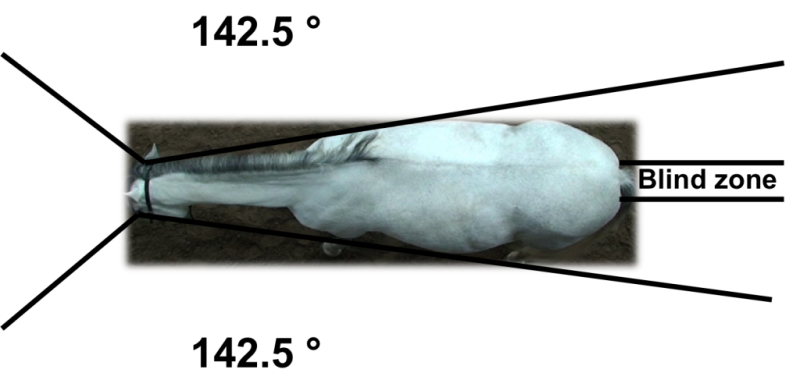
Three-dimensional view:
- The horses’ field of three dimensional vision is restricted to about 70º directly in front of him. This means his depth perception is limited. Therefore it is harder for horses to estimate distances than it is for humans.
- We humans have a three-dimensional field of vision of 120º .
Monocular view:
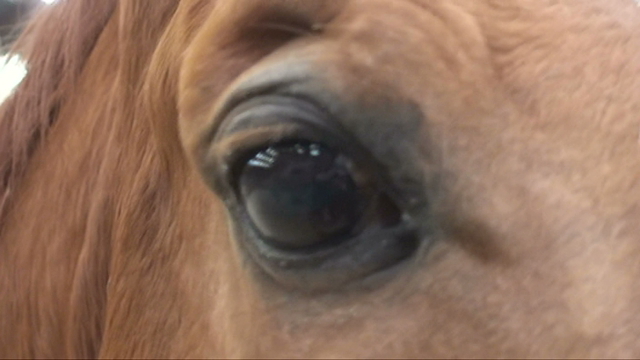
- The horse left eye has a field of vision of 142.5º. He is unable to see this exact same monocular field with his right eye: the world looks completely different to the horse from the right eye. Therefore it is possible that the horse can pass an object very calmly and easily on one side but when he passes the same object from the other side he can become suddenly very scared!
- Of the 355º that horses can see, the majority of that is monoculair vision.
- Of the 190º that we as humans can see, the majority of that is binocular vision (using both eyes).
Blind spot:
- Horses have a blind spot behind them of about 5º, which includes the area where the rider sits!
- We have a blind spot of about 170º .
- The horse has another blind spot, right under his nose. You can imagine this blind spot as if we are climbing steps: we can not see our feet if we look up.
 Night view & adapting to light
Night view & adapting to light
A horse has far better night vision than we do, but on the other hand, his focus is far less clear.
A horse also has more difficulty adjusting to differing light conditions than humans do. If a dark environment suddenly turns into a bright and light environment and vice versa the horse might be reluctant. Then don’t push him, but allow his eyes to adapt!!!
Colors
• A horse sees fewer colors than humans do.
• Horses are to some extent colorblind with respect to the color green.
• Horses can easily distinguish yellow and white from other colors.
Important!!
Learning how the horse – as a prey animal – has a completely different perception of the world around him to the perception that we as predators have, will mean that you can understand that:
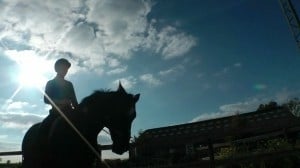
- The world of the horse on the left side looks totally different than on the right side.
- When we mount, suddenly one leg crosses from the left field of vision into the right. A young horse can easily be frightened by this.
- When you come from a dark riding arena to a light environment, it is important to give the horse some time to get used to the light.
- When we start to ride a horse in the early stages, remember that we sit exactly where the horse is unable to see us and that it is the same place where a predator would attack.
- Because it is harder for a horse to focus his view, it can explain why a horse can suddenly become frightened of something that has been in his sight for some time. It is because it had hardly been noticed and suddenly comes into clear view, because the horse moved his head.
- The horse has a better sense of hearing and sense of smell than we have. So he can spook about something we are not aware of.
We must discipline ourselves to never punish the horse for his natural behavior and reactions!
So we need to know how horse senses function !The more you learn about your horses’ world, the better you will be able to connect with your horse!
Never work against Mother Nature! You only succeed when you work with her.

